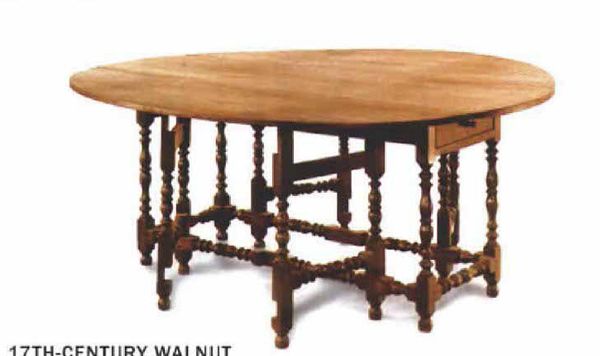Designing Table Legs
Learn from the past to build for the future: A short history of styles shows the elements of design.

Synopsis: Legs are often defining features of a table, writes Graham Blackburn, who explains in this article how to select the right legs for your table from the bewildering array of available forms. Legs must provide support, of course, but their form and shape must also suit the table’s function and style. This extensive article provides a summary of furniture from Gothic to contemporary and their distinguishing elements, with photos and drawings of exemplary pieces and close-ups of their features. Historically correct details are no substitute for overall balance, however, and Blackburn also offers information on how to ensure balance, as well.
More often than not, legs are the defining features ol a table. Once you decide on the shape and color of a tabletop, making it is largely a question of providing the required surface area with the chosen stock. But the support for the tabletop is a different matter. Table legs—whether in the form of monolithic blocks, single pedestals, trestles or in groups of three, four or moremay be provided in a bewildering array of forms. The variety of legs is virtually endless, both from stylistic and construction standpoints.
Providing reliable support may be the most fundamental requirement demanded of any leg. but deciding on an appropriate form and shape requires a reasoned understanding of the table’s function and style. Whether you are designing with a certain period look in mind or venturing out into original designs, there is something to be learned by studying the furniture of the past. Frequently, period styles are characterized by features that produce distinguishing effects. If the purpose of these effects is understood, they can be duplicated in original designs that don’t represent any particular period.
When planning a leg design, consider a few basic concepts that guide the process. Is the wood choice appropriate for the table design? Do you want the table to appear solidly grounded or delicate and refined? Should the table appear formal or relaxed? This article presents an overview of leg types, as well as their functions and construction methods, to make choosing a style and design easier for every table builder.
Function and form
Very often a table’s use will determine much of its leg design. The legs on a dining table, for example, must make sitting at it convenient: No matter how handsome any given leg may be, if it prevents a comfortable seating arrangement, it will be a functional failure. Similarly, if it is to be a heavy-load-bearing library table, it should not have delicate, spindly legs. A table that must be movable, adjustable or expandable should not rest on massive, stretcher-bound legs.
After a table’s function has been taken into account, the question of style remains. Sometimes this merely means designing legs that are coherent with the table’s essential character—stout, sturdy legs for a chunky, heavy-duty piece or delicate legs for a refined piece—but more often than not the table will contain references to a particular period or style. Adding inappropriately designed legs can result in an awkward combination that will spoil an otherwise soundly constructed piece.
Words like “inappropriately” and “awkward” may sound dangerously subjective, but in fact, style can be analyzed and understood quite objectively.
From Fine Woodworking #139
For the full article, download the PDF below:
Fine Woodworking Recommended Products

Jorgensen 6 inch Bar Clamp Set, 4 Pack

Drafting Tools

Stanley Powerlock 16-ft. tape measure






Log in or create an account to post a comment.
Sign up Log in